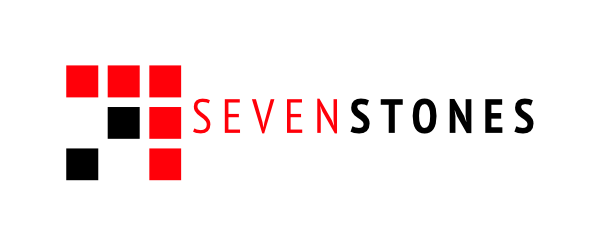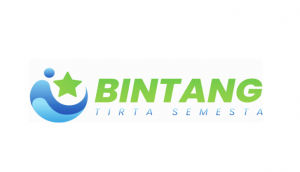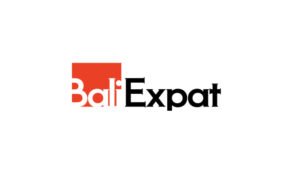General Overview
In all our day-to-day activities, buildings, in some shape or form, are where we spend a majority of our time, whether for living, commercial activities, or others. For whatever purpose we may set out to build an entirely new building or carry out various forms of changes or renovations to further suit the relevant needs or mandated requirements depending on the type of building and location.
Within Indonesia, Law No. 28 of 2002 on Buildings, as amended by Regulation of the Government in the Omnibus Law No. 2 of 2022, confirms that buildings can encompass both aboveground and/or underground with various types of activity, whether personal or commercial. In constructing and/or utilizing buildings, this legal framework mandates that the relevant owners or users should acquire certain building-related permits, which include:
PBG (Perizinan Bangunan Gedung):
In terms of PBG, said permits were earlier known as Building Construction Permits or IMB (Izin Mendirikan Bangunan), however, this permit is no longer valid following the implementation and enforcement of Regulation of Government No. 16 of 2021. As a result of this Regulation, Law 28/2002. One of the main areas that they address, and out of interest, is that current PBG allows for buildings to be classified for mixed-purpose, while its predecessor, the IMB, only allowed for buildings to be used for one function.
Law 28/2002 sets out that the above-described PBG and SLF should be applied for with the submission of applications to the central government and the relevant regional governments (provincial/regency) in line with their respective jurisdictions via the Building Management Information System (Sistem Informasi Manajemen Bangunan Gedung– “SIMBG”) This system is established by the Ministry of Public Works and Public Housing (PUPR). Regulation 16/2021 also states that the SIMBG should be utilized to secure other forms of documentation that relate to a building, such as mentioned PBG, SLF, building and land ownership, and demolition plans/permits if this is an option for your property.
Given that utilization of the SIMBG is mandatory for any and all existing building owners in order to secure a PBG, SLF, and SBKBG, this applies to any and all types of buildings, residential or commercial. Below outlines may help to create a better understanding of the process and the government’s aim with this, as well as making sure any type of existing building or new planned one gets it right to prevent later inspections and possible challenges with possible penalties. Below guidelines refer to relevant updated building regulations, as well as chats and discussions with government experts. Note that these are guidelines only, and each project should consider professional consultants, as each project may be slightly different. The guidelines have the following sections:
As briefly mentioned above, Indonesia’s regulatory framework makes it compulsory for all building owners to secure all relevant Building Permits. It is important to notice that said permits must be secured before carrying out any activities on the buildings and also comply and understand the aspects needed:
PBG: Ensuring the legal status of buildings, ensuring that the organization of buildings is up to the applicable standards, and maintaining records of building plans. PBG is needed for the following purposes: Construction of new buildings, Renovations of buildings, Expansions or reductions of sizes of buildings, Maintenance of buildings
SLF: Ensuring that buildings are safe for utilization, ensuring that buildings are up to the applicable standards, and maintaining records of the physical existence of buildings. SLF is needed for the following purposes: Renovation of existing buildings, Right of use and stipulation of use prior to usage
SBKBG: Ensuring the ownership statuses of buildings, ensuring that buildings are legal and comply with the relevant technical standards, and maintaining records of building ownership. SBKBG is needed for proof of property/building ownership.
However, in terms of PBG specifically, Law 28/2002 mandates that said permits should be secured by building owners prior to the commencement of the construction of the relevant buildings. PBG may though be secured after certain technical requirements have been fulfilled. Moreover, the Ministry has also stipulated various functions that are ascribed to the Building Permits outlined above, as detailed below:
In terms of the validity periods of Building Permits, Regulation 16/2021 has determined the following:
PBG: Lifetime validity once issued
SLF: 20-year period for single and terraced residential houses. Five-year period for other buildings.
SBKBG: Will remain valid until data stipulated under the SBKBG partially or entirely no longer conforms with the actual status of the relevant building (due to transfers of rights, amendments, deletions, and so forth)
Failure or refusal to comply and secure the above-described Building Permits will result in the imposition of administrative sanctions, which may take any of the following forms:
- Technical calculations and drawings of the building’s foundations and other components.
- Drawings of any detailed structures.
- Relevant technical specifications (e.g. general and special specifications).
- Existing Building Data Required to Be Uploaded During SLF Applications: Technical calculations and drawings of the building’s sanitation system plan.
- Calculations of noise and vibration levels (including any detailed drawings).
- Technical calculations and drawings of a detailed plan for a lightning protection system.
- Technical calculations and drawings of detailed plans for regular or evacuation-purposed sound systems.
- Technical calculations and drawings of a detailed plan for security systems and access controls.
- Technical specifications for any utilized mechanical, electrical, and plumbing components.
- Technical calculations and drawings of any in-building, detailed transportation systems (in vertical and/or horizontal mode) plan.
- Drawings of a technical electrical network plan.
- Technical calculations and drawings of a detailed plan of any internal and external communication systems, as well as information-technology data systems.
- Technical calculation and drawings of a detailed plan of any automated building systems.
- Technical calculations and drawings of detailed plans for building maintenance unit (gondola) systems.
- Technical calculations and detailed drawings of the building’s plumbing and sanitation systems.
- Technical calculations and detailed drawings of the building’s fire protection systems (Sistem Proteksi Kebakaran/SPK) that have been adjusted to match the relevant building’s level of fire risk.
In accordance with the Regulation 16/2021, the applicable PBG retribution tariffs should be determined by the relevant city/regency-level governments via its technical departments based on the integrated index for retribution unit prices. In this regard, the Integrated Index should be determined based on the relevant building’s function and classification.
While unfortunately, Law 28/2002 and Regulation 16/2021 provide no further elaboration concerning how PBG retribution tariffs should be determined, the Directorate-General of Fiscal Balance at the Ministry of Finance previously issued a set of guidelines that specifically address the area of PBG retribution and that are currently serving as a reference for use by regional governments in relation to the establishment of their own dedicated PBG retribution frameworks.
Under said Retribution Guidelines, several calculation formulas relating to the PBG retribution have been established, as follows:
- Retribution Tariffs for Buildings
- Retribution Tariffs for Building facilities
However, one of the challenges involved in the PBG application process concerns the fact that not every region across the country has established its own regional regulations that stipulate the above-described PBG retribution tariffs. In fact, as of January 2023, it was reported that only 87 cities/regencies out of a total of 508 cities/regencies across the nation had already issued their own PBG retribution tariff frameworks. Regulation 16/2021 mandates that regional governments should have established the above-mentioned PBG retribution tariff frameworks within six months of the enforcement of Regulation 16/2021, i.e. by 2 March 2022.
However, given the overall lack of PBG retribution tariff frameworks that were ultimately established by this deadline, through the issuance of Joint Circular of the Minister of Home Affairs, Minister of Finance, Minister of Public Works and Public Housing and Minister of Investment No. 973/1030/SJ, SE-1/MK.07/2022, 06/SE/M/2022, 399/A.1/2022, regional governments are permitted to utilize the previously determined IMB tariffs for PBG retributions up until 5 January 2024, provided that said governments are offering PBG-related services in accordance with Regulation 16/2021.
A few takeaways from this are as follows:
The various processes above are very specific and technical, and it’s important to be in compliance as the government is actively seeking ways of how they may be able to monitor easier. The penalties from this are substantial and not something you want to experience nor push on to an end buyer if you’re a developer.
At Seven Stones, we have a full team providing this service, and we invite you to reach out at any time for a meeting or chat to discuss your specific needs.
- Written warning/reprimands.
- Restriction of construction activities.
- Temporary or permanent suspension of construction work.
- Suspension and/or revocation of PBG.
- Building demolition order.

















